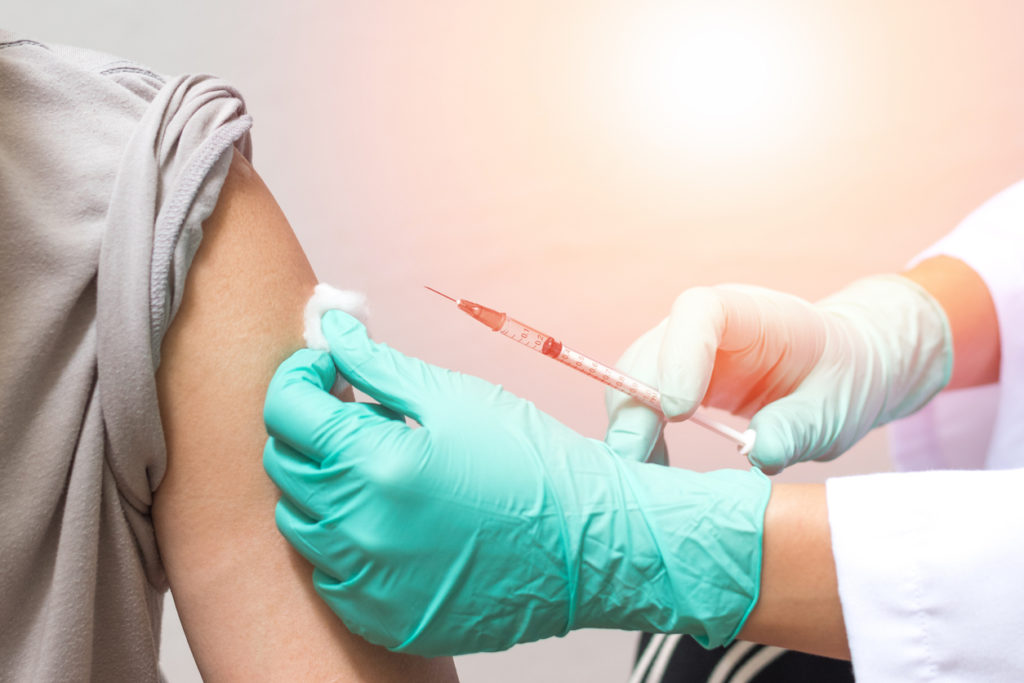For months now, Americans have waited anxiously for the first wave of coronavirus vaccines to be approved in the US. Most of us are watching the FDA’s vaccine approval timeline because we take that approval to be the critical first step in answering the number one question on everyone’s mind: when will life get back to normal?
But this is wrong. The exact day or even month of the first few vaccine approvals actually has no bearing on the question of when we’ll all be free to permanently move on from the COVID-19 era.
Instead, the “back to normal life” timeline is governed by three other questions whose answers are completely unrelated to whether the first vaccine is approved in October, December, or February:
- How effective are the approved vaccines? I.e., do they reduce the chance of infection by 60%, or 80%, or close to 100%?
- How many of the leading vaccine efforts pan out? There are three major vaccines which might read out trials in the USA in the next couple months, and by the middle of next year the number expands to about ten. Of these, how many actually wind up making it to approval?
- Will current vaccine manufacturing schedules hold? Specifically, are current estimates of times and quantities mostly right, or not?
The reason the actual approval timeline is unrelated to the above, is that the vaccine efforts are proceeding along two parallel tracks: 1) testing, and 2) manufacturing.
Under normal circumstances, vaccines aren’t manufactured at scale until after they’ve been fully tested and approved by the FDA — a process that takes years. But these aren’t normal circumstances.
In the present effort, a whole raft of vaccine candidates have already entered mass production alongside the testing phase, with the result that by the time we find out which of the vaccines work and are safe, we’ll either already have the first doses ready to distribute or we’ll be very close.
So what the vaccine approval process will actually tell us is which of vaccine production efforts that are already underway can proceed to the finish line vs. which production efforts or even stockpiled doses will need to be scrapped.
The result is that a fast approval won’t make the vaccines arrive any faster — if one of the vaccine candidates were approved tomorrow, we still have to wait for the first doses of it to roll off the production line before we can take it.
On the flip side, if a vaccine is approved after the first doses are stockpiled, then the public will still have immediate access to however many doses are ready and waiting.
Realistically, then, most people won’t see much of an impact on the actual timing of an approved vaccine hitting their local pharmacy, regardless whether approval comes before or a bit after the first doses are manufactured.
The math that tells us if and when a vaccine will get us back to normal
If you really want to know when you can resume a normal life, here is what to watch:
- If approved vaccines are close to 100% effective and you are not extremely high risk, you can go back to a normal life as soon as you’re vaccinated.
- If approved vaccines are not close to 100% effective, then being vaccinated yourself won’t do the trick for you, and you’ll have to wait for herd immunity to arrive through a combination of vaccination and infection.
The second case is the most likely one, which means that in all likelihood we’ll need to do a bit of math to with a vaccine’s trial results to determine when that vaccine will get us to herd immunity.
If you’re up for running the numbers, the formula that determines when herd immunity is achieved is:
I*Pi + V*Pv > Th
Where:
- I is the community attack rate in your area.
- Pi is the degree of protection afforded by prior infection. We know this value isn’t equal to 1, since there have been some reinfections, but we don’t know how high it is.
- V is the percentage of vaccinated individuals in your area.
- Pv is the degree of protection afforded by vaccination; how well the vaccines work.
- Th is the threshold of herd immunity. In the ideal case, where interactions are fully homogeneous, this is 1-1/R0, or about 60-80%, but in the real world, heterogeneous interactions make it somewhat lower. Some irresponsible estimates have pegged it around 20%, but the combination of serostudies and subsequent propagation results have rebuffed these values. It’s unclear how much lower Th is than the theoretical value, but it’s unlikely to be overwhelmingly lower.
So, if vaccines and infection are both close to 100% effective at preventing infection (Pi and Pv are both close to 1), then it becomes a simple matter of the percentage of the population vaccinated or infected, relative to the threshold value.
This might mean we need to vaccinate between 30% and 80% of people in different parts of the USA, depending on the value of Th and the preexisting attack rates in different areas, to achieve herd immunity. But even before then, vaccinated and infected people could go back to normal.
Even with a fairly effective vaccine, we may be over a year and millions of COVID-19 cases away from herd immunity
The optimistic scenario outlined above is essentially: once enough people take the vaccine, we’re basically done with COVID. But that scenario depends on both the vaccine and the body’s natural, post-infection response giving people close to total immunity.
However, if either the vaccine or natural exposure don’t actually grant total immunity, then things can get hairy.
For example, if infection was 90% effective at granting immunity, but vaccination was only 70% effective, and if the herd immunity threshold was 80%, then a population with no infected people could not achieve herd immunity even with a 100% vaccination rate. And realistic vaccination rates are unlikely to hit 100%.
If it goes this way, then we’ll need higher infection rates to reach herd immunity. With these example numbers, vaccinating 80% of the people would yield only 56% population immunity, requiring about 27% of the population to get COVID-19 to achieve herd immunity. If this scenario came to pass, the grind of COVID-19 cases along with the rush to vaccinate might continue until late next year in the USA, and possibly years in some parts of the world.
Also consider the sheer scale of the manufacturing challenge required to pull off the optimistic scenario. If most of the major vaccine projects get approved and are able to manufacture according to plan, the USA will probably have enough doses to vaccinate the bulk of its population in mid to late 2021 (though many countries will not be as lucky). But if many of them fall off the wagon, or if their manufacturing plans go awry, those timelines could stretch out significantly, even if vaccines are approved early and are highly effective.
So, as you watch the drama of first approvals, don’t worry too much about when approvals happen. Look at which vaccines make it to approval, how well they work, and whether production estimates hold. Those are the factors that will tell you how far away we are from the end of the pandemic.


You are reporting the comment """ by on